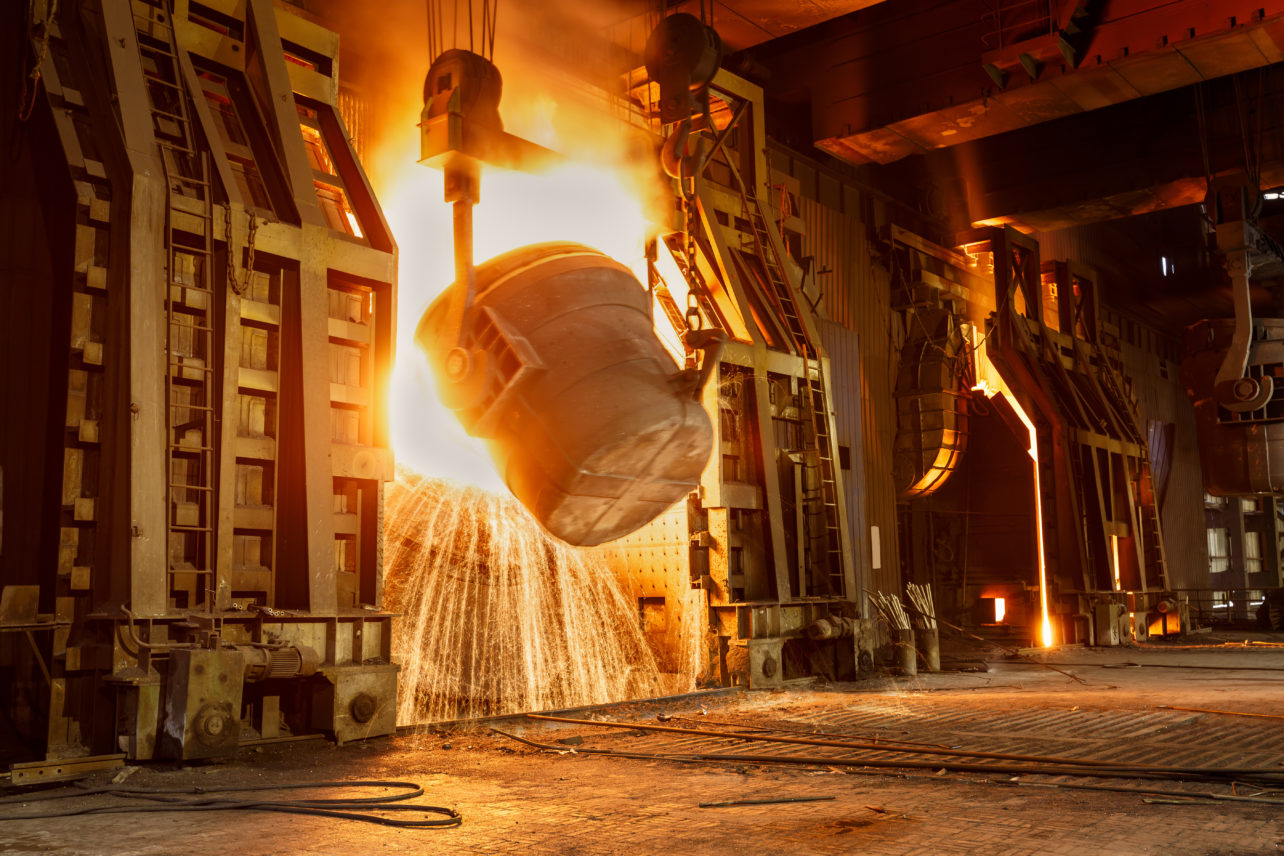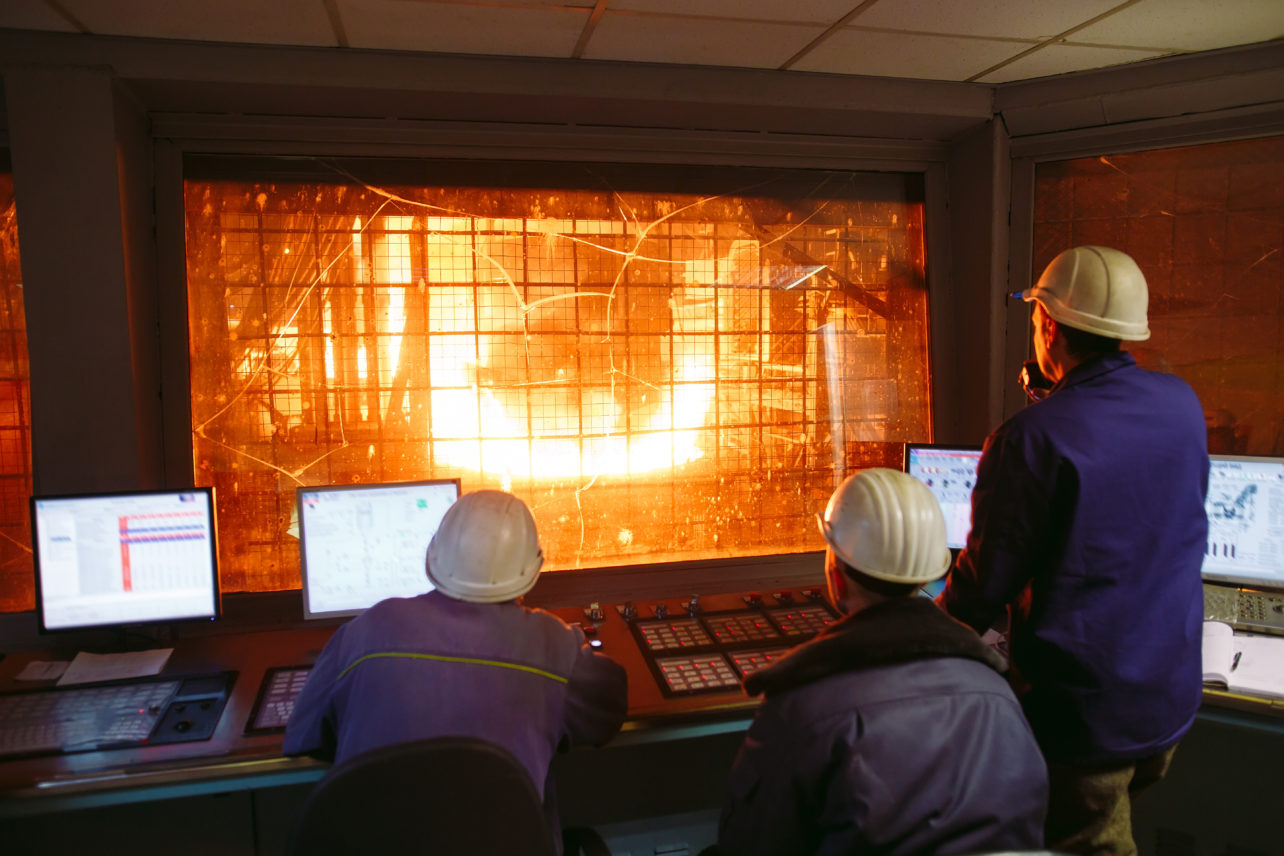Rafael Barros (Operations Manager) and Benjamim Canato (Account Manager) have spent years implementing Industry 4.0 tools for Brazilian steel producers. In this exclusive interview, they share insights, use cases, and industry-specific examples for how Braincube’s IIoT Platform can benefit steel manufacturers.
What makes the steel industry different from other industries that Braincube specializes in?
Rafael Barros: Many of our other customers specialize in continuous process manufacturing, which brings its own unique challenges. Steel production takes a long time, sometimes spanning months in order to produce the final product. For our steel customers, we work with them to integrate data from long processes. This is part of our global rollout training and implementation program. Engineers can understand what happens to a single steel product throughout the entire process with their contextualized Digital Twin. The Digital Twin is built in tandem with Braincube manufacturing experts, data scientists, and the local SMEs who provide valuable context and insights into the build process. (Want to see more use cases for Digital Twins in steel manufacturing?)
Benjamim Canato: Steel manufacturers make hundreds—sometimes thousands—of different products simultaneously at the same mill. Braincube can help steel producers track these products individually and analyze each specific product. Many steel producers already use sensors in their production processes, but most IIoT companies only aggregate this data. Braincube transforms this data into powerful information.
Based on what you’ve seen over the past few years, what is one of the biggest challenges steel manufacturers face today?
Benjamim: Steel manufacturers have access to a lot of data but they don’t always have all of the answers they need to make additional improvements. Additionally, their data often live in different, disconnected sources. There is not an easy way to bring it together for analysis.
Why is disconnected data problematic in steel?
Benjamim: Let’s say a product starts in the melt shop in January and exits the lamination stage in March. If you want to analyze data from the entire process, you may not know exactly when the product was in each phase or for how long. You might know the material was in the casting process sometime in late February but you don’t know the exact day hour or length of time. This limits your ability to find key optimizations in your process that could save you time, efficiency, and money.

Rafael: In short, Braincube’s IIoT Platform solves the problem of disconnected data sources. It enables companies to track an individual product from raw material to end product in one flow, always making sure the correct data is being used for each analysis. With this type of IIoT Platform, teams have readily accessible, cleansed, accurate data, which helps a lot of company initiatives.
Steel manufacturing is a particularly complicated industry when it comes to data aggregation. Why should steel producers choose an IIoT platform over other data solutions?
Benjamim: Depending on a steel company’s needs, they likely use two platforms for their data. One platform connects and delivers data. The other platform is used to analyze data. They may also have additional platforms for other steps, such as building charts or monitoring production. This means employees must learn multiple programs or tools in order to perform their job.
Braincube was designed as a global data solution, with the ultimate vision of empowering companies to be autonomous power users of their data.
– Benjamim Canato, Braincube Account Manager in Brazil
An IIoT platform minimizes the need to learn so many different programs. It centralizes data from multiple sources, structures the data for analysis, and some vendors even provide analysis tools—all within the same platform. Employees can use the same platform to analyze data from different sources, make graphs and tables, and implement changes to the production process. IT teams can fully manage the system, ensuring that proprietary data is safely secured.
In a recent meeting with a Braincube customer, the CIO asked for a global solution that their IT team could manage internally. They currently have different solutions in Africa and South America but wanted one solution that the IT team could manage and that everyone could learn across the world.
We often see companies that want this capability. Braincube was designed as a global data solution, with the ultimate vision of empowering companies to be autonomous power users of their data.
Can you share some examples of how centralized, structured data benefited steel customers?
Benjamim: Sure! If a customer discovers a defect during lamination, it’s too late to go back and fix the issue. They have to decide to scrap the product or, possibly, find a different buyer who would accept the defective product at a lower price.
With Braincube’s IIoT Platform, teams can go beyond understanding what went wrong in production. They can actually uncover the exact settings to have better control or quality for future runs. Companies can improve future production by quickly identifying what went wrong earlier in the process by leveraging the Braincube App Suite, which is included in our IIoT Platform solution.
Getting more specific, Braincube’s CrossRank helped one company identify that changing their furnace temperature by 10 degrees celsius would minimize their waste. They implemented this change in the furnace and achieved the results that Braincube predicted, saving them material costs and reducing waste.
In another example, a company wanted to look at the impact of changing the amount and types of chemicals used in production. They struggled to get an answer because the data was in different systems. They didn’t know how changing these chemicals during production would impact the lamination process. With Braincube’s Digital Twin, they could analyze historical data from different sources. They saw what happened in the past, found the ideal recipe, and made a global standard procedure change across their mills.
With Braincube’s IIoT Platform, teams can go beyond understanding what went wrong in production. They can actually uncover the exact settings to have better control or quality for future runs.
— Benjamim Canato, Braincube Account Manager in Brazil
Are there other interesting use cases for centralized data?
Rafael: We have also seen steel companies use Braincube to quickly understand customer issues. Let’s say a customer calls with a complaint about a product they received. Without Braincube, if a customer complains about a defective product, the engineers must dig through raw data to find an answer. They need to try piecing together information from each step of the process. Not only is this a timely project, but it is difficult for a human to analyze the hundreds of factors that went into making a specific batch of each product.
With Braincube, the steel company can use the batch number from their Digital Twin to analyze what happened and report back to the customer about what changes they are going to make so future products remain in-spec. This reassures the customer’s trust in the company and plays into ongoing quality and optimization efforts. If they uncover a wider defect that impacts other customers, they can be proactive and reach out to these customers as well. Financially, it also saves the steel company by avoiding downtime due to preventable issues.
You’ve shared a lot of “big picture” benefits for centralizing process data and using Digital Twins for manufacturing. How can these things help the individual teams working on specific steps of the steel production process?
Rafael: The production process begins with raw materials in the melt shop. A smart sensor combines few data sources to generate a large amount of information. By combining data from multiple sources and systems, steel manufacturers can track specific product batches from the very start of the production process.
For example, a temperature sensor combined with a belt rotation sensor can be structured to generate valuable information about the process. Process specialists can know how long the product spent in the hottest part of the heating curve, if there were temperature spikes (and at what stage of the process), and which batches were affected by these findings. This means there is no guessing about what raw materials went into the final product.

Batch tracking is useful in the casting phase as well. As different batches make their way into different casting lines, you know the source of each final product. You can also perform multiple variable analyses to improve your process.
Benjamim: Teams working at the end of the production process also benefit. Parts of the lamination process take milliseconds, and there are a lot of different things happening at the same line. Many rolls are being produced and each roll has differing speed, pressure, and temperature requirements. It can be hard to understand why there is a problem with the end product. Braincube makes it easy to find the answers.
What is one thing you wish steel companies knew about IIoT?
Rafael: We’ve talked a lot about how IIoT can help with the operational aspects of manufacturing, such as improving processes or helping engineers uncover answers. But IIoT is also a strategic IT advantage for steel manufacturers.
The whole goal of IT teams is to provide operations teams with data so they can perform analyses. An IIoT platform centralizes everything. The platform connects different data sources, transforms raw sensor data into smart sensor data, and then helps IT teams easily distribute this data to end-users to be used in other applications. It can be an infrastructure tool for data and set the global data strategy for the company.
When IT teams can provide better data to their end-users, it makes it possible for OT teams to uncover insights that move the company forward: it’s a win-win.
Learn More

How can Digital Twins help steel manufacturers?
Digital Twins are a trendy topic in the manufacturing world. But can Digital Twins really help your steel manufacturing company? Our IIoT specialists break down the perks.

See Braincube in action
Ready to see Braincube in action? Schedule a one-on-one demo of our IIoT Platform.

The power of centralized data
Finding connections in your production process begins with centralizing data—from any system, in any format.
